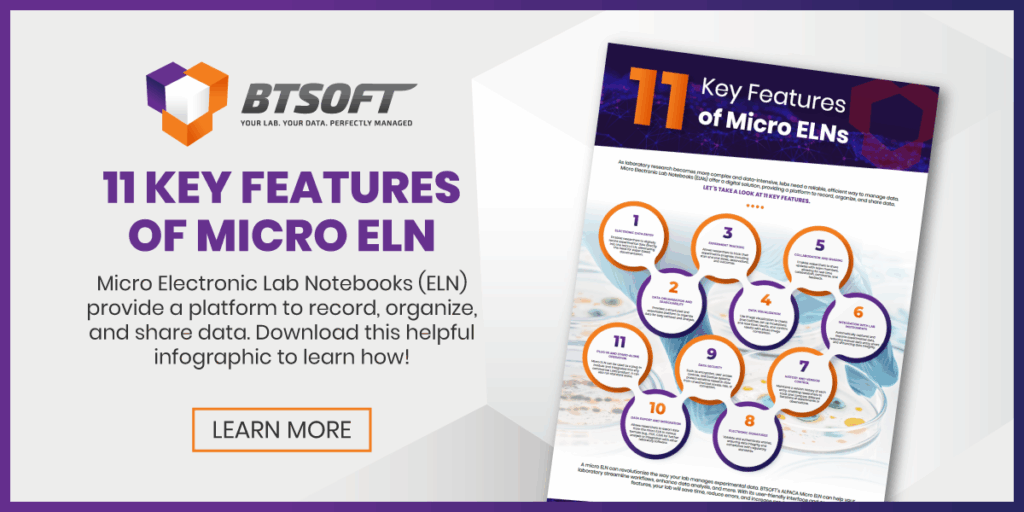Industrial hygiene is important in order to help keep workers and the community healthy and safe. However, this initiative can be challenging since there are thousands of data being stored; this makes the data hard to track, which may lead to errors. With the right LIMS, industrial hygiene labs will have the capability to handle numerous result entries.
Unleashing Your Labs True Potential with MICRO ELN
What is an Industrial Hygiene Lab?
Industrial hygiene (IH) labs deal with the process of evaluating, recognizing, identifying, and controlling workplace environmental hazards that can affect the health and safety of workers, families, and the community. This includes:
- Respiratory conditions—which occur when workers are exposed to chemicals, gases, vapors, dust, or fumes. These illnesses may develop into tuberculosis, chronic obstructive bronchitis, rhinitis, asbestosis, or pneumonitis.
- Skin diseases are caused by exposure to chemicals, plants, parasites, or other substances. These may cause eczema, rashes, dermatitis, blisters, or chrome ulcers.
- Poisoning occurs when abnormal concentrations of toxic substances are ingested, inhaled, or absorbed through the skin. Common causes of poisoning include carbon monoxide, hydrogen sulfide, mercury, lead, arsenic, benzene, and parathion.
- Other occupational illnesses, including bloodborne pathogenic diseases, anthrax, or benign or malignant tumors.
All of these can lead to long-term effects on employees’ and the community’s health and well-being.
Industrial Hygiene Labs Testing and Analysis
Most asbestos laboratory services use Polarized Light Microscopy (PLM) and Phase Contrast Microscopy (PCM) analysis. PLM analysis is for asbestos in bulk samples using the EPA/600/R-93/116 Method. It is primarily performed to identify and classify asbestos fiber concentration in bulk building materials, insulations, sprayed and non-sprayed plasters, coatings, ceilings, flooring materials, caulks, adhesives, and many other materials. PCM uses the NIOSH 7400 Method. It is performed to measure fiber concentrations in the air.
Through monitoring, testing, and analytics, IH experts prevent and minimize potential health hazards. However, IH laboratories have their challenges. IH processes involve a range of sample types and test methods—assessing air quality, lead exposure, and hazardous elements such as asbestos, mold, radon gas, radiation, or pesticides.
LIMS Benefits Industrial Hygiene Labs
Industrial hygiene laboratories are required to input and store thousands of pieces of information including bacterial genera, species names, calculations, descriptors, and much more in order to interpret data efficiently. IH labs require complex workflows and analyses that need to be supported with the right software. Laboratory Information Management System (LIMS) software are sophisticated pieces of technology that are customizable, flexible, and able to adapt to the most specific needs. They are used to manage vast amounts of data so researchers can deliver results faster. These systems provide a centralized way to track, standardize, and organize all data, processes, and tasks.
LIMS streamlines the results entry, reporting, and invoicing using a well-organized central format. LIMS enhances data quality and minimizes errors but at the same time allows for collaboration. LIMS also helps meet the needs of laboratories that are members that have achieved certification through laboratory accreditation programs like AIHA and occupational and safety standards like OSHA.
LIMS: Protecting Public Health and Safety
BTSOFT is a worldwide, multidisciplinary software company with a variety of offerings to suit the needs of any industrial hygiene laboratory. BTSOFT’s software called BTLIMS Industrial Hygiene helps labs perform health and safety tests to protect people and the environment. BTSOFT provides customizable laboratory solutions, and our team of professionals and computer programmers will assist you on all levels. Learn more about our services.





